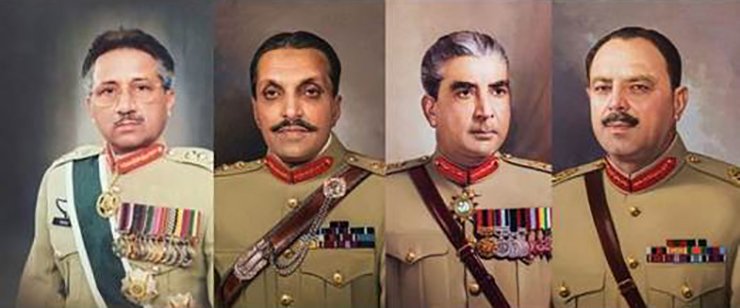The tabling of Pakistan’s 27th Constitutional Amendment bill marks one of the most consequential shifts in the country’s civil-military balance since the late 1990s. While Pakistan has experienced coups, hybrid rule, and military-backed political engineering before, the uniqueness of the current moment lies in the legalisation and constitutionalising of military authority. The amendment does not merely strengthen the role of the armed forces; it structurally embeds the military’s centrality in Pakistan’s governance framework, shaping national strategy, political life, and nuclear command oversight for years to come.
At the core of this development stands General Syed Asim Munir, Pakistan’s Army Chief. The proposed amendment, which includes the creation of a Chief of Defence Forces (CDF) and a Commander of the National Strategic Command, will effectively centralise command under positions the Pakistan Army is institutionally well-positioned to dominate. Though presented as an administrative reform for ‘efficiency’ and ‘coordination’, the real consequence is the formal shift of strategic and operational supremacy to Rawalpindi.
This raises three core analytical questions:
1. Does this amendment signify a total transfer of power to the Army?
2. Has the coup been constitutionalised?
3. Who now truly controls Pakistan’s nuclear arsenal?
The answers reveal a Pakistan entering a new phase of military supremacy not through tanks on the streets, but through clauses in the Constitution.
Consolidating the Levers of State Power
The 27th Amendment restructures Pakistan’s defence command architecture. It proposes: –
Creation of a Chief of Defence Forces, likely filled by the sitting Army Chief, making the Army the institutional hub of inter-service command.
Reduction or transformation of the role of the Chairman of the Joint Chiefs of Staff Committee historically meant to balance the service branches.
The amendment is not a coup in the traditional sense but fits the definition of what scholars term a ‘quiet constitutional coup’ or ‘coup by law’. This happens when governing elites reshape institutions so thoroughly that meaningful civilian oversight becomes structurally impossible, even without deploying force
Establishment of a Commander of the National Strategic Command, responsible for directing strategic and nuclear forces.
Changes to judicial appointment and review mechanisms, weakening the ability of courts to challenge executive or military institutional decisions.
The first major implication is clear: The Pakistan Army becomes not simply the most powerful actor, but the constitutionally entrenched centre of state authority.
Pakistan has long been under what analysts term ‘praetorian guardianship’, where the military sees itself as the ultimate arbiter of national direction. However, previous eras of military dominance were achieved extra-legally or informally:
· 1958 (Ayub Khan): Direct coup
· 1977 (Zia-ul-Haq): Martial law
· 1999 (Musharraf): Military takeover with later legal regularisation

In contrast, Asim Munir’s consolidation is occurring through the parliamentary process and constitutional embedding, which grants durability and legitimacy. If previous coups required the military to seize power, the 27th Amendment allows it to assume power through legal authority.
Is This Now a Constitutional Coup?
While the amendment is not a coup in the traditional sense, it fits the definition of what scholars term a ‘quiet constitutional coup’ or ‘coup by law’. This happens when governing elites reshape institutions so thoroughly that meaningful civilian oversight becomes structurally impossible, even without deploying force.
In Pakistan’s case, formal civilian authority remains on paper. The Prime Minister continues to ‘advise’ on senior appointments. Parliament continues to legislate. Courts continue to function. But this is procedural democracy without power symmetry. The amendment removes friction, the essential ingredient of checks and balances.
The military no longer needs to intervene to rule. It simply redefines the architecture of rule in its own image.
The greatest strategic risk is that future civilian governments — even if freely elected — will find themselves unable to reverse, restrain, or meaningfully oversee military leadership. The amendment transforms military dominance from a political fact into a constitutional condition.
The new constitutional office formalises military oversight of strategic assets at the highest level. The Prime Minister may still retain the authority to authorise nuclear use decisions, but the military will now own the execution architecture, command channels, alert protocols, and force readiness activation
Pakistan’s Nuclear Command: Civilian Theory, Military Reality
The most geopolitically sensitive outcome lies in nuclear command and control. Historically, Pakistan’s nuclear authority has been structured under:
· The National Command Authority (NCA), chaired by the Prime Minister.
· The Strategic Plans Division (SPD), staffed and led largely by military officers.
· The services’ strategic forces commands, responsible for operational deployment.
This framework maintained a civilian command decision with military operational management. The Commander of the National Strategic Command position changes that balance.
The new constitutional office formalises military oversight of strategic assets at the highest level. The Prime Minister may still retain the authority to authorise nuclear use decisions, but the military will now own the execution architecture, command channels, alert protocols, and force readiness activation.
In times of political instability — Pakistan’s defining condition — the line between authorisation and execution can blur. This shift reduces the buffer that ensures nuclear decision-making is slow, deliberative, and politically accountable. It moves Pakistan closer to a military-primacy nuclear doctrine, where the chain of command is more streamlined but also more crisis-sensitive.
For India, China, the United States, and global nuclear security stakeholders, this development deserves close strategic scrutiny.
Why Now? The Structural Logic Behind the Move
Three dynamics explain the timing:
A Politically Fragmented Civilian Elite: Pakistan’s political class is splintered among rival power centres. Parties require military patronage, legal relief, and electoral engineering to survive. This fragmentation creates an environment in which no civilian bloc can resist structural military reform.
The Army’s Need for Institutional Continuity: With economic collapse, internal security threats, insurgencies in Khyber Pakhtunkhwa and Baluchistan, and diplomatic isolation, the military sees itself as the only viable governing actor. The amendment protects the Army’s role from political turnover and legal contestation.

Asim Munir’s Leadership Style: General Munir’s tenure is marked by a preference for centralisation, secrecy, and vertical command discipline. The amendment aligns state architecture with his leadership ethos. Unlike previous chiefs, he does not seek to share authority or tolerate autonomous civilian centres of power.
Will This Lead to Total Military Rule?
Pakistan has already been under military-led governance for nearly two decades, albeit masked as hybrid rule. The 27th Amendment does not introduce military rule — it perfects it.
General Asim Munir’s tenure is marked by a preference for centralisation, secrecy, and vertical command discipline. The amendment aligns state architecture with his leadership ethos. Unlike previous chiefs, he does not seek to share authority or tolerate autonomous civilian centres of power
The key difference now is predictability. Instead of political turbulence, caretaker governments, and behind-the-scenes manipulation, Pakistan will shift to a model in which the Army controls defence, nuclear policy, intelligence, foreign policy, and internal security, and the civilian government manage administration, social services, and electoral ritual. This is not democracy. But it is a stable hybrid authoritarian structure — similar to Egypt after Sisi or Myanmar under its pre-2021 “disciplined democracy” framework.
Regional and Strategic Consequences
India’s Strategic Posture: India has long assessed Pakistan’s nuclear command as military-driven but politically certified. The amendment pushes Pakistan closer to full-spectrum military-first nuclear decision-making, increasing crisis volatility, especially during border escalations.
United States and China: Both Washington and Beijing maintain working relationships with Pakistan’s military leadership rather than civilian governments. This amendment simplifies diplomatic engagement but complicates risk-management expectations.
Internal Security: A military-centralised constitutional order risks suppressing political dissent, inflaming ethnic grievances, and militarising civil management of crises — especially in KP, GB, and Baluchistan.
The Final Question: Is This Permanent?
Constitutional changes, once enacted and enforced through military-backed institutions, tend to be difficult to reverse. However, Pakistan’s political history also demonstrates that no political order is permanent. This framework will endure as long as the Army remains cohesive and unified, the economy does not collapse beyond governability, and no mass democratic movement emerges strong enough to challenge military supremacy. The greatest internal threat to this model is not civilian resistance, but fragmentation within the military establishment itself. Pakistan’s future stability, therefore, now depends more on institutional unity in Rawalpindi than political legitimacy in Islamabad.
India has long assessed Pakistan’s nuclear command as military-driven but politically certified. The 27th amendment pushes Pakistan closer to full-spectrum military-first nuclear decision-making, increasing crisis volatility, especially during border escalations
Conclusion
The 27th Amendment marks a decisive pivot. The final transition from a hybrid system in which the military influenced politics to a constitutional regime where the military defines the political system itself. It formalises what was once informal. It legalises what was once discretionary. It replaces contested power with structured dominance. Whether framed as stability or authoritarian consolidation, the reality is the same – Pakistan’s Army is no longer behind the state. It is the state. The implications — for governance, democracy, nuclear stability, and regional security — will be profound, lasting, and deeply consequential.
-The author retired as Major General, Army Ordnance Corps, Central Command, after 37 years of service. A management doctorate and expert on defence modernisation, he is the author of four books, including the Amazon bestseller “Breaking the Chinese Myth,” and a frequent media commentator. He is affiliated with several leading defence and strategic studies institutions in New Delhi. The views expressed are of the writer and do not necessarily reflect the views of Raksha Anirveda






